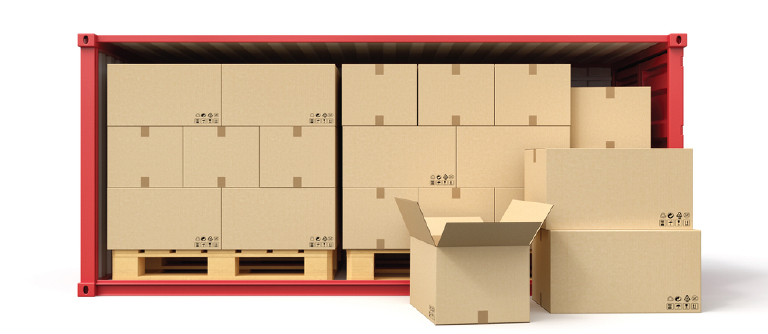FCL or Full Container Load is a cost-effective and reliable shipping method that best suits companies that transport bulk goods globally. It means you have complete access to a container and don’t share it with other products. This shipping method eliminates the potential for cargo damage or delays from sharing a container with other shipments. Logistics operators and importers/exporters can benefit significantly from knowing how FCL works. Read more about this method of shipping in this informative piece.
What is FCL Shipping?
FCL shipping means transporting goods using a full shipping container that is used only for one consignee. Unlike Less than Container Load (LCL), where multiple shipments by different shippers are put into one container, it provides a dedicated space. This is a safe and efficient transportation option for high-volume shipments. The global FCL shipping market size is expected to reach $143.50 billion by 2030.
Benefits of FCL Shipping
FCL shipping comes with diverse benefits for those businesses that are in need of hassle-free logistics solutions.
1. Faster Transit Time
As FCL containers are not shared with other shipments, they do not need to go through consolidation or deconsolidation at ports. This cuts down handling time significantly and speeds up delivery.
2. Lower Risk of Damage
The container is sealed from origin to destination, meaning that there is less risk of contamination or damage from the other shipments. This makes FCL a good option for fragile, high-value, or perishable items.
3. Cost-Effectiveness for Bulk Shipments
Although the upfront charge for reserving a complete container might seem expensive, the per-unit price frequently becomes much more economical contrasted to LCL delivery when moving large volumes of goods.
4. Simplified Documentation and Customs Clearance
Since all items in the container are owned by a single shipper with FCL, they are easier to clear at customs, and involve less risk of delays due to mixed consignment.
5. Enhanced Security
FCL containers are sealed until they reach their destination, making them less vulnerable to theft or loss than LCL shipments.
FCL vs LCL: Which is Right for You?
Choosing between FCL and LCL shipping depends on the volume of goods, budget, and delivery urgency. Here’s a comparison:
| Factor | FCL (Full Container Load) | LCL (Less than Container Load) |
| Shipment Size | Suitable for large shipments occupying a full container | Ideal for smaller shipments that do not require a full container |
| Cost Efficiency | More cost-effective for bulk goods | Higher cost per unit due to shared space |
| Transit Time | Faster as the container goes directly to the consignee | Slower due to consolidation and deconsolidation processes |
| Risk & Security | Lower risk of damage or theft as the container remains sealed | Higher risk due to multiple handling points |
| Customs Clearance | Easier since the container belongs to one consignee | May face delays due to mixed shipments |
For businesses shipping large, regular consignments, FCL is the more reliable choice. However, if your cargo volume is low, LCL might be a better alternative.
Key Considerations for FCL Shipping
To make the most of FCL shipping, it is essential to understand the following logistical aspects:
1. Container Booking & Availability
Shipping lines and freight forwarders require advance booking, especially during peak seasons. Ensuring availability early can help prevent unexpected delays.
2. Packaging & Loading Best Practices
- Use pallets or crates to protect goods from movement inside the container.
- Distribute weight evenly to prevent shifting during transit.
- Seal and label the container properly for easier customs processing.
3. Incoterms & Shipping Agreements
Understanding International Commercial Terms (Incoterms) such as FOB (Free on Board) and CIF (Cost, Insurance, and Freight) helps in defining responsibilities between buyers and sellers in an FCL shipment.
4. Customs Compliance
Ensure all required documentation, including bills of lading, packing lists, and commercial invoices, are in order to avoid unnecessary delays at customs checkpoints.
5. Container Tracking & Insurance
Most shipping lines offer tracking services, allowing businesses to monitor their shipments in real time. Additionally, cargo insurance provides coverage against potential damages or losses during transit.
How to Book an FCL Shipment
Booking an FCL shipment requires careful planning and coordination with freight forwarders. Here’s a step-by-step guide:
- Determine Your Shipping Needs – Choose the right container size based on your cargo volume and weight.
- Select a Reliable Freight Forwarder or Carrier – Compare shipping lines and freight service providers to find the best rates and services.
- Prepare Shipping Documentation – Ensure all necessary paperwork is completed, including customs declarations and permits.
- Arrange Container Pick-Up & Loading – Coordinate with transport providers to move your goods to the port for loading.
- Track the Shipment – Monitor the progress of your container through tracking services provided by shipping companies.
- Receive & Unload the Cargo – Once the container arrives at its destination, arrange for efficient unloading and final delivery.
Conclusion
FCL shipping remains a cornerstone of global trade, offering businesses a secure, cost-effective, and efficient way to transport bulk goods. Whether you are an experienced importer or a new exporter, understanding the intricacies of FCL shipping can help optimise logistics, reduce transit times, and improve overall supply chain performance.






